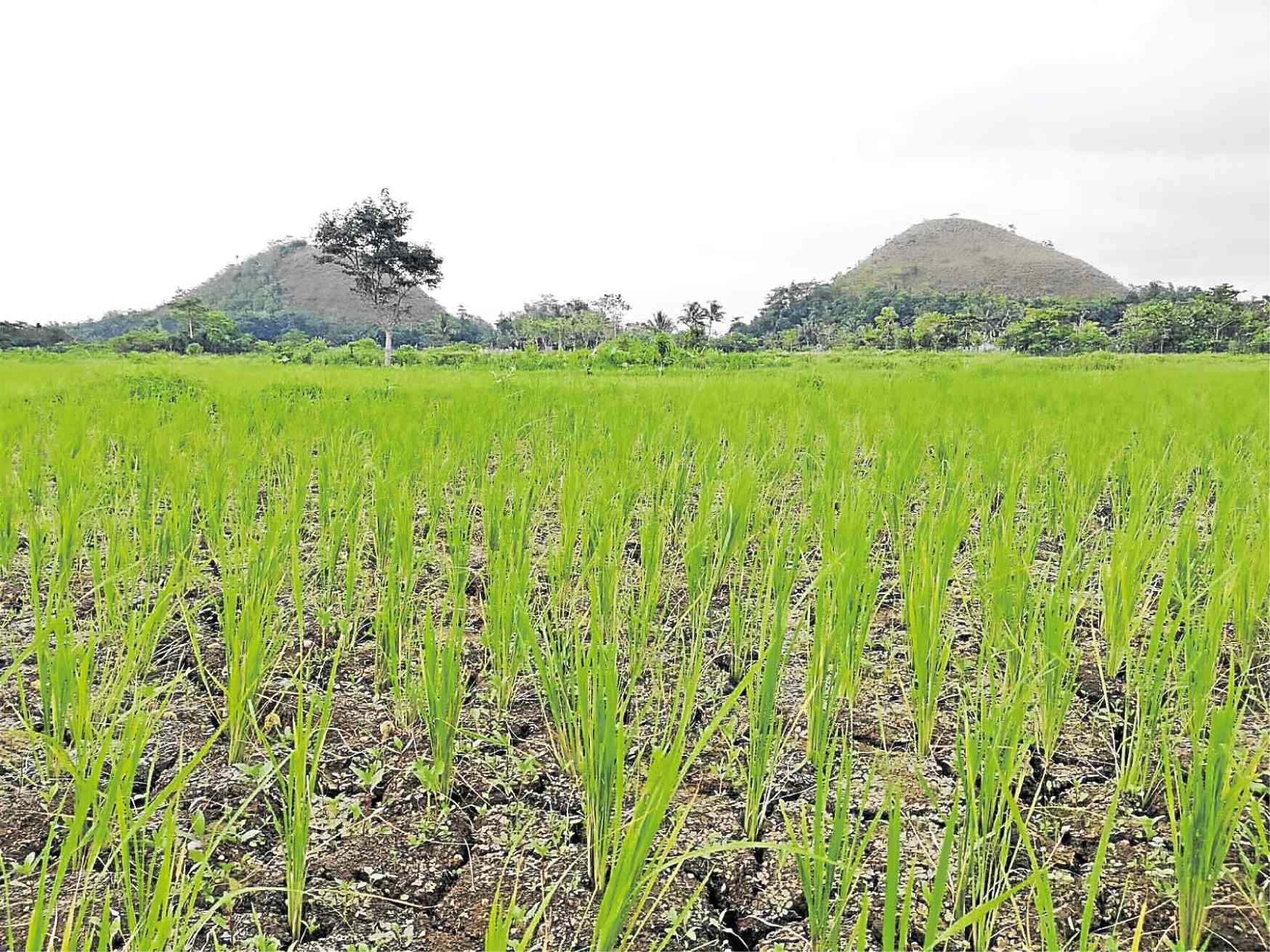
WATER SHORTAGE Rice fields in Carmen, a town in Bohol province known for the Chocolate Hills, are drying up due to the absence of heavy rain. —LEO UDTOHAN
CARMEN, BOHOL — Farmer Orcesio Amoy was eagerly waiting for rains expected to be dumped by Typhoon “Ompong” (international name: Mangkhut) last week, hoping that these would finally bring relief to his parched farm near the famous Chocolate Hills here.
While the typhoon triggered rains in some parts of Bohol and devastated farmlands in northern Luzon, Carmen experienced only a drizzle.
The lack of rain caused his palay, planted on an 8,000-square-meter farm lot at Sitio Camanayon, Barangay Buenos, to wilt. The paddies, he said, had cracked due to lack of water.
“We were happy that rain would finally come with Typhoon Ompong, but the downpour occurred in other towns. What we got here was just a drizzle,” said Amoy, 63.
He said he already accepted that he would no longer be able to recover the P20,000 he had invested in farm inputs this cropping season.
To meet the needs of his family, Amoy had been growing and selling watermelons, which were resistant to drought.
He was able to harvest watermelons last week from another farm lot. He sells these at P28 a kilogram in a makeshift stall along the national highway leading to the Chocolate Hills.
Irrigation system
Another farmer, Temio Balocoy, 45, said his palay was also wilting and feared losing them if rains would not come.
Balocoy said he got a decent harvest in September last year. This year, however, he was expecting to incur losses.
“If only we had a stable irrigation system, we would not have any problem with water supply during the dry spell,” he added.
In 2016, a state of calamity was declared in Bohol, the rice bowl of Central Visayas region, due to drought.
This year, farmlands in the towns of Corella, Calape, Loon, San Isidro, Sagbayan and Tubigon had been left unused even if these had been plowed due to the dry spell.
Larry Pamugas, acting provincial agriculturist, said recent rains in Bohol were not enough to save farms.
“What we need is a long period of soaking rain to fill our dams, replenish all our waterways and moisten the soil,” Pamugas said.
He said more than 47,000 hectares of rice land had dried up due to the dry spell.
Of these, 24,000 ha are irrigated through dams, small water catchments and diversionary canals. The rest rely on rain.
El Niño
Only 800 ha of rice farms had been harvested in the towns of Lila, Bilar and some parts of Batuan this month.
“Rice plants in our rainfed areas are not just yellowish, they are turning brown, which means there is not enough water,” Pamugas said.
Water elevations in Bohol’s four major dams—Bayongan in San Miguel town, Malinao in Pilar town, Capayas in Ubay town and Talibon in Talibon town—were near critical levels.
Pamugas said the remaining water in these dams could not support land preparation for the next cropping season in November.
Unfortunately, the Philippine Atmospheric, Geophysical Astronomical Services Administration (Pagasa) was anticipating the El Niño phenomenon, or prolonged dry spell, toward the last quarter of 2018.
“If the provincial government will not intervene to produce artificial rain [through cloud seeding], farmers in most rainfed areas in Bohol cannot plant rice in the next cropping [season],” he said.